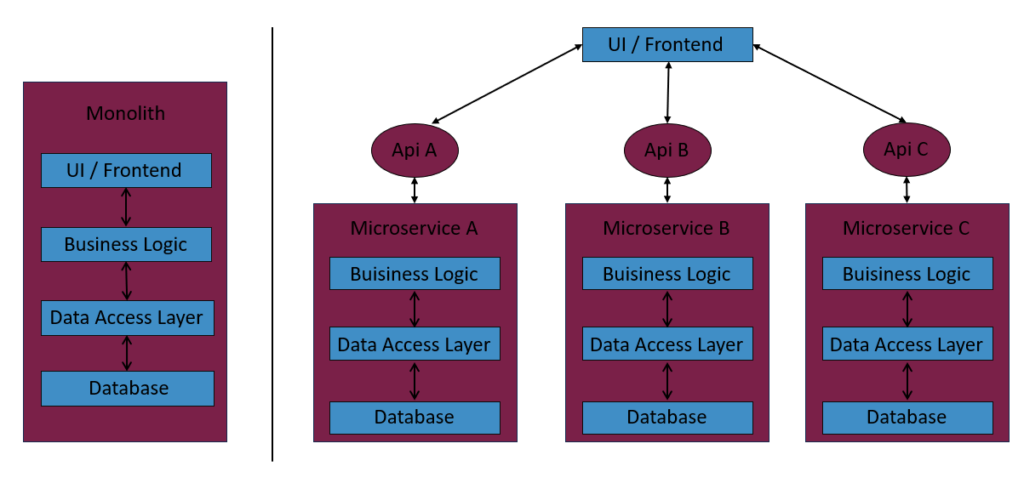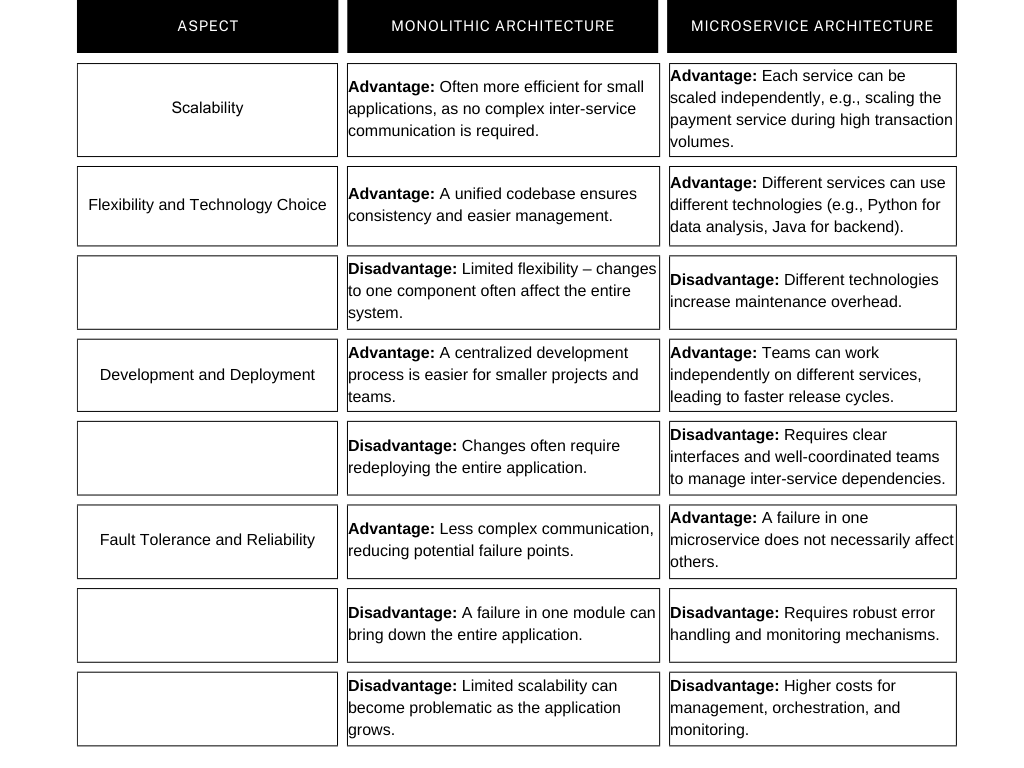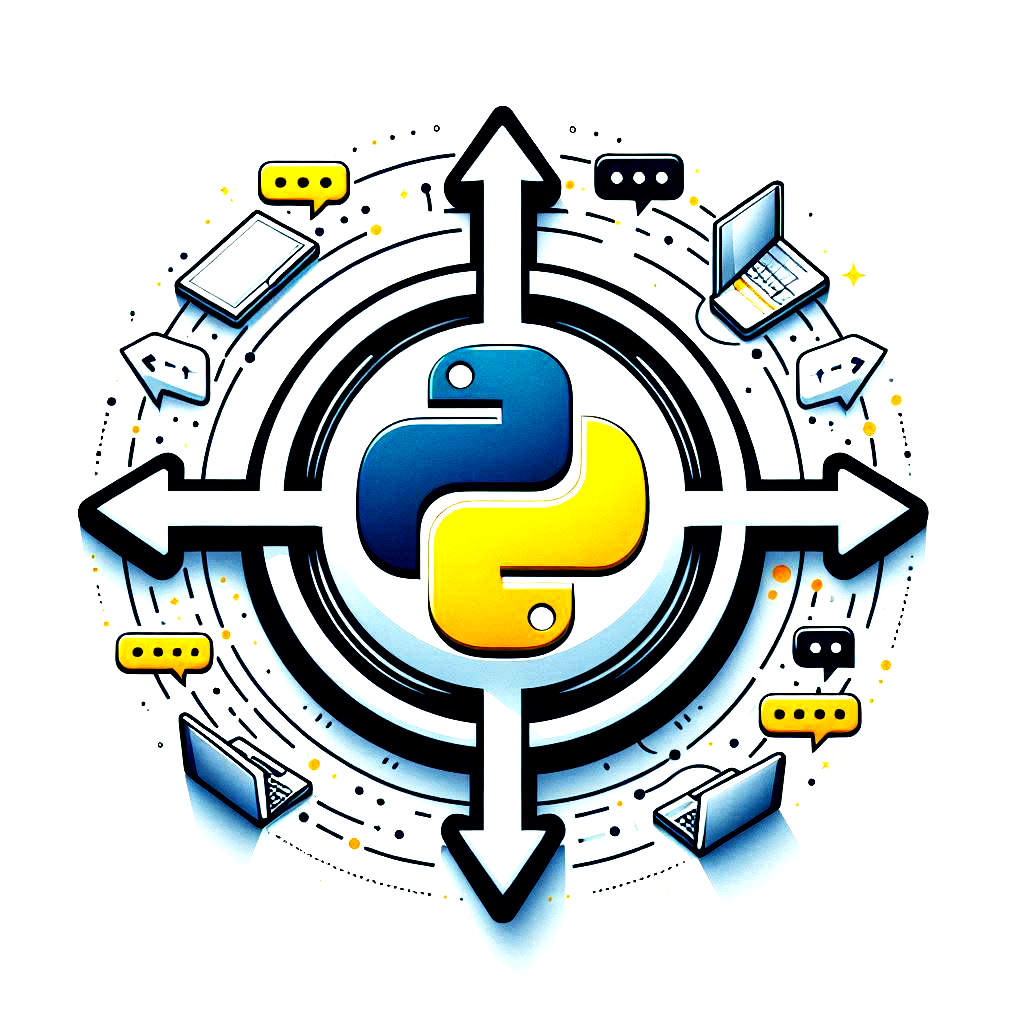Why Microservice Architecture Instead of Monolith? Pros, Cons, and Use Cases

In modern software development, teams are often faced with a critical question: Should we choose a Microservice Architecture or a Monolith for our project? While monolithic architectures have traditionally been the preferred choice for many applications, the increasing complexity and dynamic nature of software projects have brought Microservices into the spotlight.
Microservice architectures offer several advantages, such as improved scalability, faster deployment cycles, and the ability to develop different parts of a system independently. But are they always the better choice? The decision between Microservices vs. Monolith depends on various factors, including project size, team structure, and long-term goals.
In this article, we take a detailed look at both approaches, compare their pros and cons, and explore which architecture is best suited for different use cases.
What is a Monolithic Architecture?
A Monolithic Architecture refers to a software development approach where all parts of an application—such as the user interface, business logic, and database integration—are tightly integrated into a single, cohesive codebase. This means the entire application is developed, tested, and deployed as one unit.
For many years, this approach was the standard in software development and is still commonly used for smaller projects today. However, as modern applications grow in complexity, the limitations of the monolithic approach often become evident.
Key Features of Monolithic Architecture
- Centralized Codebase: All functionalities and modules are housed within a single repository.
- Strong Dependencies: Changes in one module can impact other modules.
- Unified Deployment: Even minor changes require a complete redeployment of the application.
A Practical Example
A classic example of a monolithic architecture is a basic e-commerce platform:
- Imagine a platform that displays products, handles orders, and processes payments.
- In a monolithic architecture, these features—product catalog, shopping cart, and payment processing—are all integrated into one system.
- This means that an issue with the payment function could potentially disrupt the entire platform.
Monolithic architectures are particularly suitable for smaller to mid-sized applications with manageable requirements. However, as complexity grows or user traffic increases, it’s worth considering a Microservice Architecture.
What is a Microservice Architecture?
A Microservice Architecture is a modern software development approach where an application is divided into smaller, independent services. Each of these services, known as microservices, is specialized in performing a specific function, such as user management, payment processing, or product catalog.
In contrast to monolithic architecture, microservices operate independently and communicate primarily through APIs (Application Programming Interfaces), enabling flexible and scalable development.
Key Features of Microservice Architecture
- Independent Services: Each microservice is autonomous and can be developed, tested, and deployed independently.
- Decentralized Data Management: Each service can use its own database or storage system tailored to its function.
- API-based Communication: Services interact via standardized interfaces (e.g., REST or GraphQL).
A Practical Example
A large example of a microservice architecture is Netflix:
- Netflix has split its platform into several microservices, including services for user profiles, movie recommendations, streaming quality, and payment processing.
- Each service works independently, allowing Netflix to implement new features faster and reduce downtime for individual components.
Microservice architectures are ideal for large, dynamic applications that need frequent updates or expansions. However, startups or smaller projects may find the initial complexity and overhead overwhelming.
Advantages and Disadvantages: Microservices vs Monolith Architectures in Comparison
The decision between a monolithic and microservice architecture depends heavily on the project’s requirements, size, and scalability needs. Below is a comparison of the key advantages and disadvantages of both approaches:

When Should You Choose Microservices Over Monolithic Architecture?
The decision between a Microservice and a Monolithic architecture is highly dependent on the project requirements and objectives. While monoliths are suitable for small and manageable applications, microservices offer significant advantages for more complex, dynamically growing systems.
When is a Microservice Architecture the Right Choice?
Microservices are the better option when one or more of the following criteria apply:
High Scalability Required:
- When you are developing an application that needs to scale flexibly, such as a streaming platform or a globally used e-commerce store.
- Example: A heavily trafficked payment platform can improve performance by independently scaling the payment service.
Frequent Updates and New Features:
- If your team wants to release new features regularly without redeploying the entire application.
- Example: In a social media system, different teams can simultaneously work on features like the feed algorithm or chat functionality.
Independent Development Teams:
- If your project involves multiple teams that need to work autonomously to increase productivity.
- Example: One team could work on the search functionality, while another improves user management.
Different Technology Requirements:
- When different parts of the application need different technologies or programming languages.
- Example: A machine learning model could run in Python, while the rest of the application is implemented in Java.
Globally Distributed Applications:
- When the application needs to be globally available, with regional usage differences taken into account.
- Example: A streaming service may provide video caching services in various regions while other parts of the application run centrally.
Fault Tolerance and System Stability:
- When high availability is essential, and a failure should not bring down the entire application.
- Example: If a recommendation service in an e-commerce system fails, the shopping cart should still function.
Tools and Technologies for Microservices
Adopting a Microservice architecture requires modern tools and technologies to enable development, deployment, scaling, and monitoring. Here are the key categories and tools essential for microservices:
1. Containerization and Orchestration
Containers allow microservices to run in isolated environments, while orchestration tools help manage multiple containers efficiently.
- Docker: Standard tool for containerizing applications. Each microservice runs in its own Docker container.
- Kubernetes: The market leader in orchestration. Kubernetes helps manage, scale, and monitor containers in complex environments.
- Amazon ECS (Elastic Container Service): A cloud-based alternative specifically designed for AWS users.
2. API Gateways and Service Mesh
These tools facilitate communication between microservices and manage access, security, and load balancing.
- API Gateways:
- Kong: Popular open-source API gateway providing routing and security mechanisms like authentication.
- AWS API Gateway: A cloud-based solution enabling API management with minimal configuration.
- Service Mesh:
3. Monitoring and Observability
Monitoring the microservice infrastructure is critical for identifying errors quickly and optimizing performance.
- Prometheus: Open-source monitoring and alerting tool, particularly useful in combination with Grafana.
- Grafana: Visualizes data from monitoring tools like Prometheus and provides customizable dashboards.
- ELK Stack (Elasticsearch, Logstash, Kibana): A suite for log analysis and error monitoring.
4. Databases for Microservices
In a microservice architecture, each service can use its own database tailored to its needs.
- SQL Databases:
- PostgreSQL: Ideal for transaction-based services like payment processing.
- MySQL: A reliable classic widely used in microservices.
- NoSQL Databases:
5. CI/CD Pipelines and Automation
Continuous integration and deployment (CI/CD) accelerate the development process and enable quick releases.
- Jenkins: Open-source tool for automating builds and deployments.
- GitLab CI/CD: An integrated solution for version control and CI/CD.
- GitHub Actions: Automates workflows directly from your repository.
6. Communication and Messaging
Microservices often need to communicate with each other. Messaging tools play a significant role here.
- RabbitMQ: A reliable message broker for asynchronous communication.
- Apache Kafka: Scalable and ideal for processing large amounts of real-time data.
- gRPC: A high-performance framework for direct, synchronous communication between services.
7. Security Solutions
Security is especially important in a distributed architecture.
- OAuth 2.0 & OpenID Connect: Standards for user and service authentication and authorization.
- Vault by HashiCorp: Centralized secret management for API keys, tokens, and passwords.
- Cloudflare: Protection against DDoS attacks and secure API calls.
Conclusion: Why Choose Microservices Over Monolithic Architecture?
The choice between a Microservice architecture and a Monolith depends on the specific needs of your project. While monoliths shine through simplicity and lower administrative overhead, microservices offer unbeatable advantages in scalability, flexibility, and developing complex applications.
With the right tools and technologies – such as Docker, Kubernetes, and API gateways – microservices can be implemented and operated efficiently. Especially for dynamic, growing projects that need to release new features frequently and respond flexibly to user demands, microservices are the best choice.


